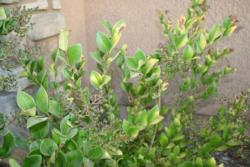Gardening Questions Answered
End of Summer Plant Heat Stress
It's the end of summer and the plants in my garden look fried! The temperatures have cooled this month, but the plants still seem wilted and the leaves have brown edges. Will they recover and what can I do?

Our heat here in the Central San Joaquin Valley can be brutal in July and August and into September. It is so important that we plant varieties that are adapted to our climate (zones 8 and 9, zone 7 in the foothills) and which can withstand both cold and heat. Those plants that suffer the greatest damage in summer are usually either poorly chosen or incorrectly placed in the garden.
Full sun on a label rarely means the really full sun we have here. Many, actually most, plants will benefit from some sort of protection from our afternoon sun in summer. They can be planted where they receive some shade in the afternoon or a temporary solution such as shade cloth or a market or patio umbrella can be arranged. New plantings may need extra shade for several summers until their immature root systems have developed so that they can draw up enough water to nourish the plant.
Mulching with at least 3-4 inches of well-composted humus or compost will keep roots evenly moist and protect them from temperature fluctuations. Plants need to be monitored daily for signs of heat stress. Irrigation times and frequencies need to be increased in summer. Drip irrigation and bubbler systems get water directly to the roots better than overhead sprinkler systems and conserve water. Sandy soil should be amended with organic matter so that it holds water longer.
